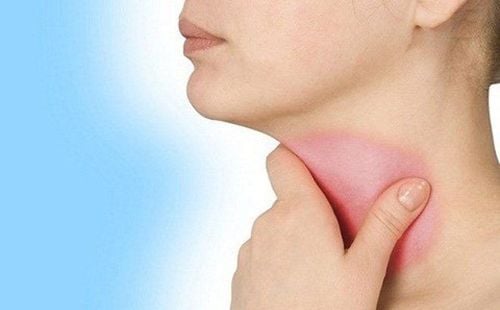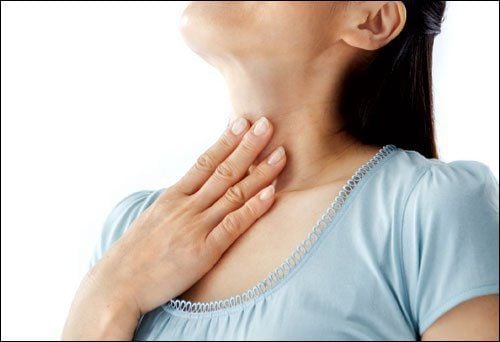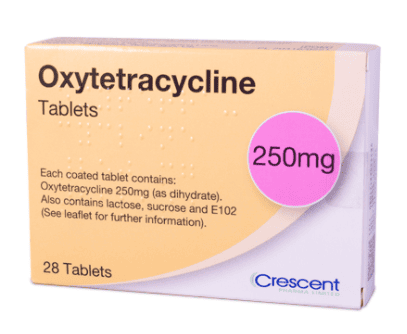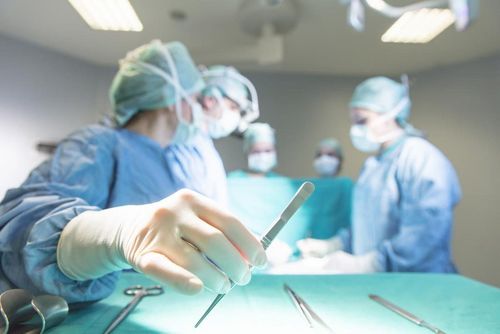This is an automatically translated article.
Esophageal obstruction is a very common condition, especially in children, due to ingestion of foreign bodies. Congestion has many different causes and can range in severity from mild to severe. Therefore, when noticing signs of esophageal obstruction such as choking, difficulty swallowing, heartburn, etc., patients should regularly visit a medical facility.
1. What is Esophageal Obstruction?
Esophageal obstruction is a condition in which the esophagus does not flow, not allowing food, water or digestive juices to pass. There are many different causes of esophageal obstruction. It may be due to a medical condition or the ingestion of a foreign body. It can also be caused by internal or external causes.Esophageal causes:
There are esophageal tumors, which can be benign or malignant. Esophageal ring. Esophageal mesh. Esophageal stricture due to gastroesophageal reflux or ingestion of corrosive substances. Causes outside the esophagus:
Left atrial enlargement. Aortic aneurysm. Abnormal subclavian artery. Bone spurs in the neck. There is a breast tumor.
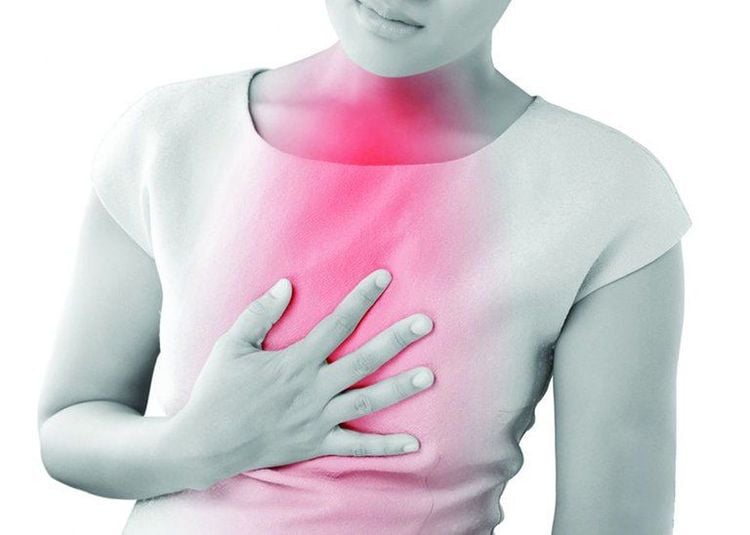
Tắc nghẽn thực quản là tình trạng thực quản không lưu thông, không cho thức ăn, nước uống hay các dịch tiêu hóa đi qua
2. Obstructive disorders of the esophagus
2.1 Esophageal foreign body When eating, food must pass through the esophagus to the stomach and digestion. When passing through the esophagus, food is easy to get stuck and cause esophageal obstruction due to foreign objects.
Esophageal foreign bodies are diverse. It can be a large piece of food that has not been chewed well or a piece of fish or chicken bones. In children, due to their hyperactivity and curiosity, it is very easy to choke by swallowing small objects such as marbles, coins or longan and lychee seeds. Foreign bodies are often located in narrow areas that can be physiological or pathological.
Possible complications due to esophageal foreign body include:
Esophageal obstruction: The obstruction can be partial or complete. Incomplete obstruction rarely requires emergency care, only in the case of sharp objects sticking to the intestinal wall, which can cause intestinal perforation. Perforation: When sharp objects are swallowed. Necrosis: If the foreign body is stuck for more than 24 hours, it can lead to necrosis. Disc batteries can cause esophageal burns, perforation, or esophageal-tracheal fistulas. Clinical symptoms:
Swallowing: patients with partial obstruction may have difficulty swallowing. Patients with complete obstruction are unable to swallow food, water, including digestive juices secreted from the oral cavity. Abdominal discomfort, vomiting, painful swallowing, bloody saliva. When swallowing sharp objects can scratch the esophagus but do not get stuck. At that time, the patient feels that there is a foreign body but it is not. The patient may feel pain, especially when the wound is deep and large. Diagnosis:
Esophageal remains are usually diagnosed endoscopically. Those with symptoms suggestive of complete esophageal obstruction and with a history of obstruction should receive immediate endoscopic treatment. In contrast, patients with few symptoms, who swallow normally, can be monitored at home. In some cases, imaging can be diagnosed through X-ray, CT for metal or bone foreign bodies or performed on children and patients with neurological disorders. Treatment:
The treatment for esophageal obstruction is to remove the foreign body. Endoscopy can be used to remove foreign bodies trapped in the esophagus. Occasionally, observational testing and intravenous glucagon may be performed. In some cases, foreign bodies enter the stomach on their own, then move through the digestive tract and are expelled. Therefore, patients with mild signs of obstruction and who do not eat sharp objects or plate batteries can be safely monitored for 24 hours. This helps to limit medical interventions and save costs. After 24 hours, if the foreign body has not been eliminated and the patient still has symptoms, it is necessary to conduct endoscopy. To avoid complications of esophageal obstruction, especially gangrene. Removal of foreign body through endoscopy using forceps, gabion or trap. The tube should be placed through the esophagus or intubated to prevent aspiration of foreign bodies or fluids into the respiratory tract and lungs. Endoscopy is usually performed when the foreign body is sharp, round or button-shaped, and any obstruction is causing severe symptoms. For foreign bodies that are round and blunt objects can be removed with a Foley catheter. Pass the catheter over the foreign body and the balloon is inflated. Then gently withdraw the catheter. Make sure the patient is in the head-down position. This procedure is usually performed with the help of an x-ray.

Có thể dùng phương pháp nội soi để điều trị tắc nghẽn thực quản bằng việc loại bỏ các dị vật bị mắc kẹt
2.2. Cardiac spasms Cardiac spasm is also a condition that causes blockage of the esophagus because food does not reach the stomach.
Symptoms:
Swallowing : Difficulty swallowing with both solid or dilute food, drinking water. Vomiting: Common, occurring several hours after a meal. At night, the patient may present as a cough while sleeping. When you wake up to find food on your pillow or nightgown. Feeling of pain or discomfort in the chest: Common in young people. Spastic pain that radiates to the back and below the jaw. The pain can last from half an hour to a whole day. Pain occurs more in the middle of the night and is greatly reduced when drinking water. Heartburn . Weight loss. The cause of achalasia is still unclear. However, many factors related to the occurrence of the disease have been proposed. Specifically:
Common in people aged 18-40, more women than men. People with nervous disorders, easily emotional, especially those with hyperparasympathetic system. People who often eat foods that are too hot or too cold. People with diseases such as typhus, tuberculosis, syphilis... People who are addicted to alcohol, tobacco, exposed to chemicals. People with endocrine disorders, inflammation around the esophagus, gastric ulcers, hypotonia or reduced esophageal muscle motility... Sometimes cardiac spasms are also seen in people with a diet high in glucose, low in protein and low in protein. vitamin B deficiency. Complications:
Cardiac spasms make it difficult for food to move down the stomach and obstruct the esophagus. Stagnant food for a long time can cause esophagitis. In addition, this condition also causes malnutrition due to inability to eat or drink. Or have aspiration pneumonia due to regurgitation. The disease can progress to cancer with a rate of about 9%. The mechanism of treatment is to reduce pressure on the lower esophageal sphincter, which improves the movement of food from the esophagus to the stomach. Treatments include:
Botulinum injection (Botox): This method is often used for patients who are at high risk for surgery or are not willing to have surgery. The recurrence rate after surgery is 50% after 6 months. After 2 surgeries, if the disease is still not cured, it can be treated with nifedipine or isordil method. Esophageal dilatation. Lower esophageal sphincter: The goal is to relieve lower sphincter pressure. Currently, this method is usually performed through endoscopy. Patients often have reflux symptoms after endoscopy. The success rate of this method is very high, up to 90%. Esophagectomy: Usually indicated only in patients with dilated esophagus. Drugs: Applied to patients who cannot undergo surgical intervention, patients can use calcium-suppressing drugs. In summary, esophageal obstruction is a very common condition, especially in children, due to ingestion of foreign bodies. Congestion has many different causes and can range in severity from mild to severe. Therefore, if there are symptoms of esophageal obstruction, the patient should be examined and treated immediately.
Please dial HOTLINE for more information or register for an appointment HERE. Download MyVinmec app to make appointments faster and to manage your bookings easily.




